

Article fait par :Claude Balmefrezol
Mis en ligne le

Les rations allemandes 1939 1945
English Translation
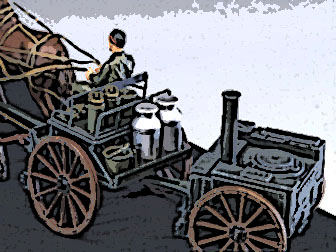 |
Normalement en campagne, les soldats allemands ont un repas chaud une fois par jour confectionné sur les cuisines de campagne du bataillon. Dans la théorie tandis que les troupes étaient en marche l'unité chargé de la cuisine commandée par son sergent ou Feldkochunteroffizier du cuisinier et de ses assistants ou Küchenbullen préparent avec leurs Gulaschkanone l'eau chaude pour le thé ou le café qui peuvent être servis chaud agréable surtout par temps froid.
Les Landsers ont leur ration de pain pour la journée Kriegsbrot, un pain noir multi-céréales, du fromage des produits en conserve comme la Käse (marmelade) et parfois de la Dauerwurs saucisse pour leur repas matinal.
Le Gulaschkanone sert à faire cuire du ragoût ou Eintopf pour le repas de midi, normalement le principal repas de la journée. Le repas du soir, est identique à celui du matin avec des restes de pain, avec peut-être l'ajout de soupe instantanée ou Wehrmachts-Suppekonserve.
L’armée allemande a des Eiserne Portionen ou halb-Eiserne Portionen des Nahkampfpäckchen et des Großkampfpäckchen
Lorsque la situation tactique interdit la distribution de nourriture chaude pendant 24 heures ou plus, les commandants d'unités peuvent autoriser leurs soldats a consommer leur Eiserne Portionen ou halb-Eiserne Portionen
L’armée allemande utilisent 3 types de rations
Eiserne Portionen ou halb-Eiserne Portionen
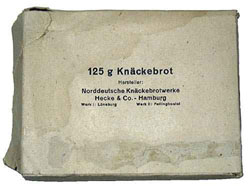 |
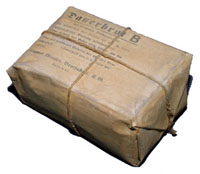 |
| Eiserne Portionen | Pain d'une Eiserne Portionen |
La ration de fer ou demi ration métallique est composée de conserves de viande et d'emballage des craquelins, très similaire à L’US K-Ration, (la K rations a été mise au point par le docteur Ancel Keys, de l'Université de Minnesota, et le Subsistence Research Laboratory).Elle possède son emballage très simple dans lequel contrairement à la Ration K dans l'armée américaine de la K-Ration nous ne trouvons pas de cigarettes, des chewing-gum et de café instantané,
Cette ration a été transporté dans le sac à dos sur lors des marches du Landser (Beutel zum Gefechtsgepäck) et est généralement placé à l'intérieur de la Zwiebackbeutel.
Cette ration se composait de 300 grammes de craquelins durs (Zwieback, Hartkeks ou Knäckebrot), 200 g de viande (Fleischkonserve), 150 grammes de légumes en conserve ou déshydratés (Gemüse) ou de la saucisse et des pois (Erbsenwurst), 25 g de cafe artificiel ( Kaffe-Ersatz), et 25 grammes de sel (Salz).
Le halb-Eiserne Portion transportées par le Landser dans leur Gefechstgepäck composé de la viande en conserve et des biscuits seulement.
Description de la Eiserne Portionen
Tiré de source suivant The Field Food Service officiel de 1939, version du manuel Reibert, chapitre VII, section C, paragraphe 3.
Rappel des consignes
Chaque fois que les ravitaillement ou les « achats locaux » ne sont pas disponibles, les troupes doivent utiliser leurs Eiserne Portionen. deux rations seront emportées par chaque homme destinées à être consommées dans le cas que les repas ne peuvent être fournis par le popote régimentaire
Les rations ne doivent être utilisées que sur ordre du commandement
La distribution des ces rations est de la compétence du Feldverpflegungsoffizier ou intendant sur le terrain. Au niveau des bataillons de cette distribution est normalement effectuée par le Stabsintendant
La Eiserne Portionen est toujours transportée par la troupe qui est censée en prendre soin,. Avant une marche ou un assaut les troupes reçoivent une ration pour un jour supplémentaire de Eiserne Portionen si toutefois un nombre suffisant de rations sont disponibles celle-ci pèse entre 190 et 200 grammes net, elle serait composée de bœuf ou du porc haché ou Schinkenwurs Labkaus.
Les boîtes ne sont pas généralement marqués. Une simple étiquette descriptive est collée à l'extérieur.
Le biscuit présent dans la Eiserne Portionen est plus varié avec 300 grammes de Hartkeks, Knäckebrot, Zwieback, ou simplement des biscuits. Ils peuvent être soit en portion individuelle soit pré-emballés dans du papier ou des boîtes en carton.
Nous pouvons aussi trouver un sac à pain Brotbeutel. Knäckebrot, avec du pain croustillant, semblable à du pain croustillant suédois
Nous les trouvons emballés dans des cartons par 4, mais d’après un nutritionniste américain ce pain est dur cassant, avec un fort goût de seigle. Il ressemble au biscuit pour chien sucré
On peut trouver aussi des Hartkeks autre substitut pour le pain dans le même paquet conditionnés par six .Cette entreprise fabrique encore aujourd'hui des biscuits et les cookies), C’est essentiellement un biscuit round enrichis en vitamines et autres nutriments. En conclusion, les rations allemandes ne sont pas au niveau des américaines pour procurer au combattant allemande son lot de nourriture et de vitamines
Le Nahkampfpäckchen et la Großkampfpäckchen
 |
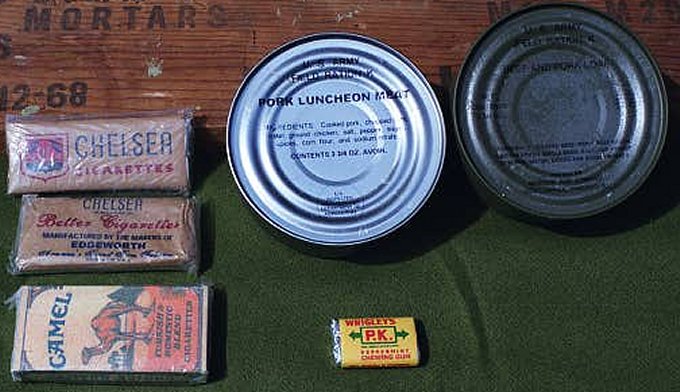 |
| internet | internet |
La ration Américaine K-Ration a impressionné l'armée allemande. Contrairement à celle allemande (Eiserne Portion) la K-Ration fournie un menu plus varié et plus de stimulants comme le sucre et la nicotine et elle était légère en poids, et tout est pré-emballé et près a être utilisé. Pour résumer une boîte, un repas.
Vers la fin de la Seconde Guerre mondiale, la Wehrmacht a commencé à recevoir ses propres "K-Ration". Elles sont de deux types
Le Nahkampfpäckchen et la Großkampfpäckchen.
Les boîtes sont faites dans un carton de couleur crème, avec le label Nur Für Frontkämpfer Infanterieverband (uniquement pour la ligne de front des troupes de combat dans les unités d'infanterie) imprimé en rouge. avec un rabat-et-fente de fermeture.
Elle contenait d’après les études de l’US Intelligence service (TM-E 30-451 ) des barres de fruit, un paquet de cigarettes, le rouleau de bonbons d'un paquet de cigarettes et une petite boîte de biscuits.
Les barres de fruit étaient enveloppées dans un papier ciré avec une étiquette imprimée en rouge .Sur cette étiquette on trouvait les inscriptions suivant
la date hergestellt
Le poids Netto Frischgewicht ca. 80g
Le nom du fabricant t à l'origine par exemple Wilhelm Felsche à Leipzig.
Le rouleau de bonbons (Deli Dropse) qui fondait durant les journées de forte chaleur comme le caramel endommageant la boîte et son contenu, a été enlevé
Il y avait 5 bonbons dans ce paquet enveloppés dans un papier ciré avec le logo imprimé avec inscription Reichsgesundheits Gutmarke Reich ou de la santé Seal. L'étiquette est imprimée en rouge et bleu C’est une production Schokoladewerke K.G. Lobositz.
Les cigarettes sont fabriquées par Sulima à Dresde. Il a six cigarettes, enveloppées dans un papier d'aluminium La boîte est imprimée en rouge et noir. .
Les biscuits sont emballés dans du papier ciré et emballé dans une petite boîte en carton
En résumé cette ration contient
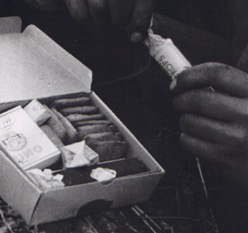 |
| Nahkampfpäckchen |
2 barres de fruit ou 1x fruit et 1x barre de chocolat
1 boîte de biscuits
3 ou 4 boîtes de cigarettes
2 ou 3 rouleaux de bonbons
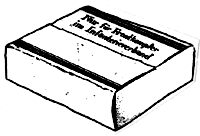 |
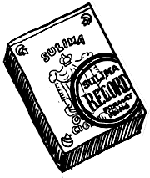 |
| Biscuits | Cigarettes |
 |
 |
| Barres Fruits | rouleaux de bonbons |
La Goulashkannone (kleine feldküche Hf13)
| internet | internet | internet |
La cuisine de campagne ou roulante ou goulasch canon, est une remorque sur laquelle est placé une cuisine de campagne composée d'une ou de plusieurs chaudières intégré avec un foyer. Elle a un rôle important dans le théâtre des opérations militaires chez tous les belligérants ( France URSS USA Grande Bretagne ) , mais aussi pour la protection civile
Petite histoire de la Gulaschkanone
La cuisine roulante est déjà présente dans l'Antiquité. Mais c’est depuis le 19ème siècle seulement que les autorités militaires s’y intéressent vraiment
Il faut attendre la fin du 19ème siècle pour voir une amélioration dans la vie militaire avec l'apparition des roulantes militaire
En 1892, Karl Rudolf Fissler de Idar-Oberstein l’invente et ensuite de 'nombreuses armées passent commande de ce type de matériel.
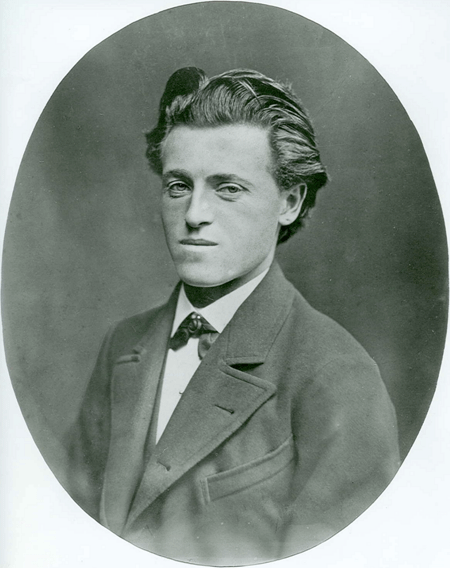 |
.png) |
Cette Feldkochherd a été la première du genre, uniquement conçue pour la cuisine. Au début nous trouvions des véhicules reconditionnés pour être adapté à cette mission ( Sauf la roulante française du 1° empire ).
Le Feldkochherd était connu exclusivement pour cela
 |
|
| internet | internet |
Elle a facilité la préparation et la cuisson des repas chauds partout sur le terrain Ce véhicule a été, depuis un symbole de bien-être pour le soldat
Pour l'allemand le nom populaire de " Gulaschkanone ",lui a été donné car cette roulante avec sa cheminée construite sur la base d'un Radkanone ressemble à un matériel type utilisant un foyer avec de préférence feu de bois.
Maintenant les unités modernes utilisent des combustibles solides ou diesel et souvent le gaz.
L'appareil est toujours utilise aujourd'hui dans de nombreuses armées ils ont parfois aussi un usage spécifique ( boulangerie ) permettant ainsi de délivrer des repas avec des aliments de qualité en plus des portions.
Le menu
Gulaschkanone ne sert pas seulement à préparer le goulasch, mais aussi des soupes et des des repas complets. Au cours de WW 1, il a souvent été servir a cuire des ragoût de chevaux, à partir des animaux tués ou blessés au cours de la bataille.
Au cours de la Seconde Guerre mondiale, nous trouvons des légumineuses comme les pois, les haricots, les lentilles et autres légumes secs qui en plus de leur valeur nutritionnelle élevée ont un faible poids à sec
Le Gulaschkanone peut aussi fournir des boissons chaudes comme le thé, le café ou le vin chaud.
Les Eiserne Portionen (avec les conserves de légumes, le sel, le café, etc.) sont stockées dans l’avant train de la Gulaschkanone ou dans le camion tracteur En plus des composantes de la halb-Eiserne Portion, il y avait aussi Wehrmachts-Suppe, ou condensés soupe et le café, ce qui a permis aux cuisiniers de livrer des liquides chauds comme un complément.
La Gulaschkanone pouvait être utilisé également en cas de catastrophes civiles,
German Rations (1939 1945
 |
Normaly on campaign, German soldiers has hot meals once a day from their field kitchens company or battalion. Ideally, while the troops were marching the unit’s kitchen personnel which included the mess sergeant or Feldkochunteroffizier and his cook’s assistants or Küchenbullen would prepare with their Gulaschkanone hot water for tea or coffee could be served out, especially during cold weather. Landsers have their bread ration for the day Kriegsbrot, a dark, multi-grain bread , and would draw cheese Käse jelly or preserves (marmalade) and perhaps hard sausage Dauerwurs) for their morning meal.
The Gulaschkanone serve one time at day a to cook stew or Eintopf on the mid-day meal, normally the largest meal of the day. The evening meal would be like that of the morning, using the remainder of the bread issue, with perhaps the addition of instant soup or Wehrmachts-Suppekonserve).
We found the eiserne Portionen or halb-eiserne Portionen and latter the Nahkampfpäckchen and the Großkampfpäckchen
When the tactical situation prohibited the bringing up of hot food for 24 hours or more commanders units could authorize soldiers to consume their iron or half-iron rations
We found on German army 3 types of rations
Eiserne Portionen or halb-eiserne Portionen
 |
 |
| Eiserne Portionen | cracker portion Eiserne Portionen |
The iron or half-iron ration, was canned meat and packaged crackers, was similar to the American Army’s K-Ration ,( K rations were developed by Dr. Ancel Keys of the University of Minnesota, and the Subsistence Research Laboratory ). though it was packed more simply and but we don’t found cigarettes, chewing gum and instant coffee like in the American Army’s K-Ration,
This ration was carried in the bag on the Landser’s assault pack (Beutel zum Gefechtsgepäck) and was normally placed inside the Zwiebackbeutel.
This ration consisted of 300 grams of hard crackers (Zwieback, Hartkeks or Knäckebrot), 200 grams of preserved meat (Fleischkonserve), 150 grams of preserved or dehydrated vegetables (Gemüse) or pea sausage (Erbsenwurst), 25 grams of artificial substitute coffee (Kaffe-Ersatz), and 25 grams of salt (Salz). The halb-eiserne Portion carried by Landser in their Gefechstgepäck consisted of the canned meat and crackers only.
Description of the eiserne Portionen
Source The Field Food Service Official of 1939, a book which serves as the cook’s version of the Reibert’s manual, Chapter VII, Section C, Paragraph 3.
After a recall of the orders
Whenever supplies and local procurement are not available, troops must utilize their iron rations…two rations will be carried by each man. …this meat and is intended to be consumed in the case that rations cannot be provided by the field kitchen. ….They were used only in the case where food supplies from the issue point (regiment or battalion level to the company field kitchens could not make it through. They were only be eaten upon the expressed order of the troop commanding officer
Allotment of this iron rations was the duty of the food service officer or Feldverpflegungsoffizier. At battalion level this duty was normally carried out by the Stabsintendant
The iron ration was to be always carried by the troops, who were supposed maintain the rations in perfect condition. Before march or movement to contact, troops were issued an additional day's issue of iron rations if sufficient numbers were available
Weighing between 190 and 200 grams net, she would be composed with various pork or beef products, Schinkenwurs or corned beef hash Labkaus .
The cans were usually not labeled,.A simple descriptive paper label was glued to the outside.
The cracker portion of the iron ration offered a bit more variety, with 300 grams of Hartkeks, Knäckebrot, Zwieback, or plain crackers. They could have been issued individually or pre-packed in paper or cardboard boxes.
We found also a bread bag or Brotbeutel. Knäckebrot, or crisp bread, similar to the Swedish crisp bread
It came packed four to a carton, but after American nutrionist It was hard and brittle, with a strong rye taste. He was a sweet dog biscuit
We can found also Hartkeks other substitute for bread in the same package of six . This manufacture is always in on the market today for the crackers and cookies
This Harteks was essentially a hard biscuit fortified with vitamins and other nutrients. In conclusion German ration are not at the level of similar american rations to provide variety of food and vitamins
The Nahkampfpäckchen and the Großkampfpäckchen
 |
 |
| Internet | Internet |
The American K-Ration impressed the German Army. Contrary to the Eiserne Portion the US K-Ration supplied a more varied menu and provided more stimulants like sugar and nicotine and she was light in weight, pre-measured, pre-packaged. To resume One box, one meal.
Late in World War II, the Wehrmacht began to issue its own "K-Ration". They came in two types
The Nahkampfpäckchen and the Großkampfpäckchen.
The boxes are a cream-colored cardboard, with the label Nur Für Frontkämpfer in Infanterieverband (only for front-line combat troops in infantry units) printed in red. with an unusual flap-and-slot closure.
She containt after studies of US IntelIigence service (TM-E 30-451 a fruit bar, a pack of cigarettes, roll of candy a pack of cigarettes and a small box of biscuits.
The fruit bar is wrapped in a waxy paper with label is printed in red. With inscription Hergestellt the date : Netto Frischgewicht ca. 80g. and origin for example Wilhelm Felsche in Leipzig.
The roll of candy (Deli Dropse ) on warm days are quickly like caramel and almost ruined the box and the rest of the contents, He has been since removed
There were 5 candies in the package wrapped in a waxy paper with the company logo printed with inscription Reichsgesundheits Gutmarke or Reich's Health Seal. The label is printed in red and blue
This product was made by Schokoladewerke K.G. Lobositz.
The cigarettes were made by Sulima in Dresden. He six cigarettes, wrapped in a tin foil envelope. The box is printed in red and black. .
The biscuits are wrapped in waxy paper and packaged in a small cardboard box
 |
| Nahkampfpäckchen |
Conclusion this ration contents
 |
 |
| small box of biscuits | cigarettes |
 |
 |
| fruit bar | Deli Dropse |
2 fruit bars or 1 fruit bar and 1 chocolate bar
1 box of biscuits
3 or 4 boxes of cigarettes
2 or 3 rolls of candy
Gulaschkanone( kleine feldküche Hf13)
| Internet | Internet | Internet |
A field kitchen or colloquial goulash cannon, is a trailer, where a field kitchen is assembled, consisting of one or more integrated boilers and a fire exists. She has an important role in the military theatre of operations for all belligerents (see france Russia US Britain) and on all epoca but also in the theatre of civil protection
Little history of Gulaschkanone
The field cooking is a war craftsmen and was already represented in antiquity. But since the 19th siecle only head quarter or important military authorities have a filed kitchen a disposition
He must be wait the end of the 19th siecle to see an amelioration in the soldier life with apparition of the field kitchen
In 1892 Karl Rudolf Fissler of Idar-Oberstein invented the and so latter many armies orders this type of material.
 |
.png) |
This Feldkochherd was the first of its kind, solely for cooking purposes. First you found vehicles rebuilt and be prepared for cooking use except this 1e Empire Filed kitchen
The Feldkochherd was buit since the beginning for his job
 |
|
| Internet | Internet |
She facilitated the preparation of cooked and hot meals every where in the field This device was, since a symbol of well being for the soldier
For German the popular name of "goulash cannon", was gived on the basis of a similar transport Radkanone way, and partly to the chimney with his black smoke The goulash cannon was burning material of any kind, preferably wood fired.
The device is alway using today in many armies with often specialisation ( Bakery) in use and complements supply self-propelled vehicles Modern goulash cannons are working with many solid materials, and also allow for the preparation of relatively high quality food in greater portioning.
The menu
Goulashkannone can not only be prepared goulash, but alongside soups and casseroles and also complete meals . During WW 1 he was often stew horses produced, who are animals killed or wounded during the battle .
During the Second World War you found legumes such as peas, beans, lentils or other dried vegetables for use, in addition to its high nutritional value and a low dry weight
The Gulashkanone can also deliver hot drinks like tea, coffee or mulled wine ready.
The iron ration or Eiserne Portionen (with canned vegetables, salt, coffee, etc.) was stored in the field kitchen wagon or on the truck carrying the field stove. In addition to the components of the halb-eiserne Portion, there was also Wehrmachts-Suppe, or condensed soup, and coffee, which allowed the cooks to issue warm liquids as a supplement.
The Filed kitchen could be use also in case of civil disaster,